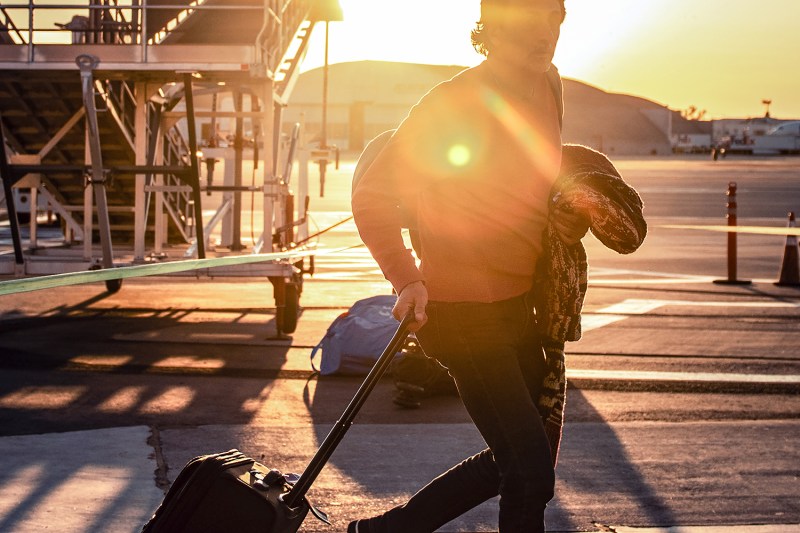I’ll admit it – using luggage tags when I traveled used to feel like an afterthought for me, but that changed the first time my bag didn’t show up at the airport baggage claim. After a long and stressful process of tracking it down, I finally understood how important it is to have a good luggage tag with clear information so you can be reunited with your bag if it gets lost. Now, I never travel without one. If you’ve ever wondered, “Are luggage tags necessary?” I’m here to break it down for you. Here’s the real purpose of luggage tags and why they’re important.
The purpose of luggage tags

As I’m sure you know, luggage tags help identify your bags. Airports handle millions of suitcases, backpacks, and duffels every year. And according to NPR, airlines actually lose 2 million suitcases a year. With so many bags that look alike, it’s easy to grab the wrong one or, worse, lose your own, whether someone accidentally grabs yours, or your bag misses your flight. According to Ben Thoennes from Ben Thoennes Dream Vacations, not only do luggage tags help distinguish your belongings from everyone else’s, but they also serve as a backup identification method if your airline’s barcode sticker is damaged or lost.
Why luggage tags are necessary
Easier bag identification

Think about this for a minute – how many times have you stood at the baggage carousel waiting for your suitcase, only to see a dozen bags that look just like yours? A brightly colored or uniquely designed luggage tag can help you find yours right away.
Protection against lost luggage
While no one wants to think about their luggage going missing, it’s a reality for many travelers (like me). In fact, Nicole Hogg, director of product management at SITA, recommends including your name and contact information both on the outside and inside of your bag to assist in case it gets lost during travel.
Backup for airline tags
Airline baggage stickers are not foolproof. They can peel off, get smudged, or even be placed on the wrong bag. A luggage tag is a secondary identifier that ensures that even if the airline’s system fails, your bag has a clear label that points back to you.
When luggage tags are non-negotiable

While the evidence points to luggage tags generally being a good idea, there are certain situations where they’re pretty much essential:
- During international travel- With multiple connections and long distances, the risk of lost luggage increases. A luggage tag can be a lifesaver in these scenarios.
- Group travel- When traveling with friends or family, it’s common for everyone to have similar suitcases. Tags help avoid mix-ups so you can easily keep track of your bags.
- Checking in at hotels or cruise ships. Many hotels and cruise lines handle your luggage for you. Having a clear luggage tag ensures it’s delivered to the right room.
How to choose the right luggage tag

Here are a few factors to consider when picking a luggage tag:
- Choose tags made from sturdy materials like leather, metal, or thick plastic. They’ll withstand the wear and tear of travel better than the flimsy paper tags usually supplied by the airlines at the check-in counter.
- Bright colors or unique designs make it easier to spot your bag from afar.
- Look for tags with strong straps or fasteners that won’t easily break or fall off.
- Pick tags that protect your personal information from prying eyes.
- Some tags allow you to include additional details like your travel itinerary or emergency contacts.
The downsides of luggage tags

Despite their advantages, there are a few drawbacks to consider as well:
- Exposing your personal information on a tag can be risky if it falls into the wrong hands. However, this can be mitigated with privacy covers or QR-coded tags.
- High-quality luggage tags can be an added expense, though they’re often worth the investment.
- Some travelers forget to update their luggage tags or fail to attach them securely, rendering them useless.
Alternatives to traditional luggage tags

If you’re not sold on the idea of using a traditional tag, there are alternative methods to identify your luggage:
- Smart luggage tags. These incorporate technology like GPS tracking, QR codes, or Bluetooth to help you locate your bag in real-time.
- Custom luggage wraps. If you just want an easy way to make your luggage stand out from the rest, personalized covers or straps can make your suitcase stand out without the need for a tag.
- Permanent markers. Writing your contact details on the inside lining of your suitcase can serve as an easy backup.
So, are luggage tags necessary?

Are luggage tags necessary? While they’re not legally required, they are undoubtedly a smart and practical travel accessory. A well-chosen luggage tag can save you time, prevent mix-ups, and give you peace of mind when you’re on the go. Taking a few extra minutes to attach a tag to your bag is a small effort that could make a big difference.




